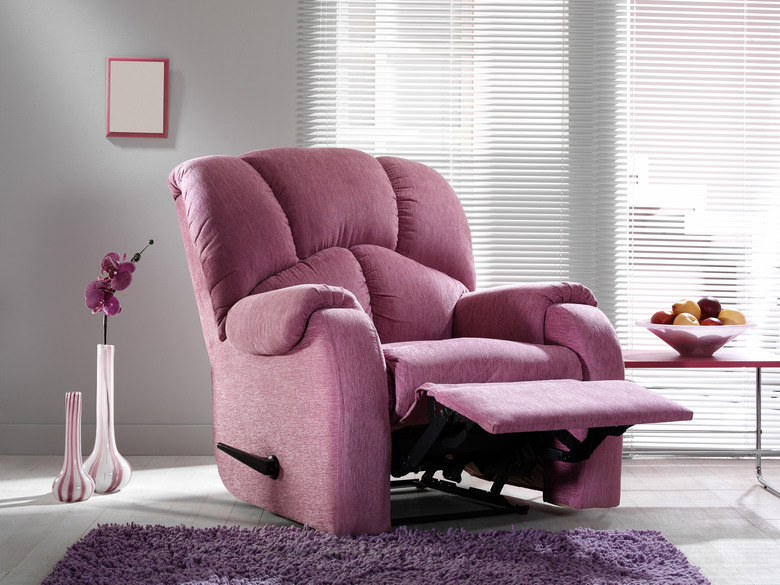Troubleshooting Recliner Issues
Recliners are a must-have item in many homes for a variety of reasons. Some people purchase them for the comfort of relaxing in a soft chair while having the ability to change positions when desired. Others, however, purchase recliners for health benefits, such as the ease of getting into and out of the chair, proper weight distribution to ease pain and reduce pressure points on muscles and joints or even the pain relief many people receive from the massage feature.
Regardless of your reason for buying a recliner, if the recliner's not working properly, then you cannot enjoy the benefits. Before you call customer service or a repair technician, take some time to troubleshoot why your recliner is not working so you can either fix the problem or explain what is wrong accurately.
Recliner Power Not Working
Recliner Power Not Working
There are several reasons the recliner power is not working. To determine the cause, you will need to turn your chair over carefully so that you can examine the wiring underneath the seat.
But before you do so, reflect back to your last power outage. Has your recliner worked since that time? If your recliner is not plugged into a surge protector, the transformer may have been damaged due to a power surge or electrical storm. In this case, you will need to replace the transformer. If you are confident that the power outage was not the cause, check your outlet to confirm that it is working properly. This can be done by plugging a lamp into your outlet. If it turns on, but your recliner is not working, then there is a problem with the electrical wiring of the recliner. When you have determined that neither of these possibilities is the source of your problem, unplug the recliner and carefully turn it over to begin troubleshooting.
Before you examine the wires, check for any objects that may be caught. Is there a small toy or building block stuck inside? If so, remove it, then test to see if the recliner works. If not, you will need to check the wiring.
With a flashlight, carefully examine the connections to each wire. Gently wiggle each wire to determine if any are loose. If you notice a loose wire, even if it is near the motor, reconnect it. To prevent loose wires in the future, secure them with electrical tape.
If no wires are loose, examine them for cuts. Often, cuts will prevent the chair from closing properly. Once you have located the cuts, intertwine the loose ends to reconnect the wiring. To prevent this from happening again, wrap the wires with electrical tape and fasten the wires to the frame of your recliner with zip ties.
The Recliner Isn't Moving Properly
The Recliner Isn't Moving Properly
If your recliner uses a lever to move instead of power, pushing and pulling the lever quickly and repeatedly can cause it to become difficult to use. To avoid this problem, hold the lever in the position you'd like for at least five seconds to prevent this problem from occurring. If the recliner footrest is leaning when the chair is open or the footrest is hard to open and close, the reclining mechanism scissors may be bent or broken or there may be an issue with the chair frame. A repair technician will need to determine the exact cause as to why the recliner footrest is leaning.
The Recliner Is Leaning
The Recliner Is Leaning
If your recliner is leaning, there are several ways to troubleshoot this problem. First, move the chair to another location and, using a level ruler or phone app, confirm that your floor is even. If the issue is your floor, then select a new location for your chair. Next, examine the padding to determine if it is uneven. If you tend to sit to one side only, you will notice that side sinking first as the cushion compresses and you will need to replace the padding. One of the most common mechanical causes of a recliner leaning is a bent reclining mechanism, which will need to be adjusted. On older chairs, the frame itself may have loosened over time, creating a lean or creaking noises.
Other Recliner Problems
Other Recliner Problems
If you sit down in your chair and feel as though your seat is sinking, your back hurts or the recliner is uncomfortable, the problem is usually the padding. Over time, the padding will compress and you will sink lower into the chair. As your seat cushion compresses, a gap may develop in the lower back of the chair, causing discomfort and even back pain. Another source of back pain could be compressed padding in the lumbar area. For padding issues, a repair tech should examine your chair to determine the proper solution when your recliner is uncomfortable.
The Recliner Has a Hole in the Seat
The Recliner Has a Hole in the Seat
If you sit down and feel as though the recliner has a hole in the seat that was not there the day before, then a broken seat spring or webbing is the likely culprit. To confirm, carefully turn your chair over and examine the springs underneath to see why the recliner has a hole in the seat. If a spring is broken, it will hang down or poke through the chair's dust cover. A tech will need to replace or reattach the broken springs.
